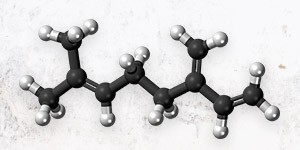By Manuel Guzmán

Manuel Guzmán is Professor of Biochemistry and Molecular Biology at Complutense University of Madrid, member of the Spanish Royal Academy of Pharmacy, and member of the Board of Directors of the International Association for Cannabinoid Medicines. His research focuses on the study of the mechanism of action and therapeutic properties of cannabinoids, especially in the nervous system. This work has given rise to more than one hundred publications in specialized international journals, as well as to several international patents on the possible therapeutic applications of cannabinoids as anticancer and neuroprotective drugs. He routinely collaborates with scientific reviewing and funding agencies.
The possible antitumour activity of cannabinoids is one of the aspects of current biomedical research on these molecules on which the media has focused most.
For example, a review recently published in the journal Cureus (DOI: 10.7759/cureus.3918) revealed that the news items appearing on social networks about the hypothetical curative power of cannabis in oncology patients (I) have increased 10 times more quickly than those referring to standard antitumour therapies, (II) among the myriad alternative antitumour therapies, cannabis therapies are the most discussed (23.5%), and (III) in the vast majority of cases, reports are false (the authors of the paper estimated one true news item for every 118 published).
Another clear reflection of the popularity of this topic is the large number of articles published on the CANNA Foundation's website on the subject. Thus, several colleagues (Guillermo Velasco, Cristina Sánchez, Mariano García de Palau, Saoirse O'Sullivan, Mike Tagen – and apologies if I have forgotten anyone), together with myself, have spent recent years disseminating our knowledge of the antitumour action of cannabinoids and their underlying mechanisms.
In this article, I will try to update the status of this topic, focusing on "raw" clinical reality (patients) rather than on the often "illusory" preclinical research (mice). As I pointed out in two earlier articles, the bitter experience of recent decades shows us that, for the diseases with the highest incidence and/or morbidity and mortality in our environment, such as cancer, cardiovascular diseases, and neurodegenerative diseases, the numerous therapeutic studies carried out in mice have been unsuccessful in practice in terms of their translation to patients. Yes, unfortunately, small laboratory mice are pathophysiologically much simpler, more robust animals than we are.
For many years now, abundant scientific studies have been accumulating showing that THC and other cannabinoids exert antitumour effects in preclinical models of cancer, and that they do so by means of a very complex mechanism that, depending on the type of tumour, involves a combination of at least (I) inhibition of cell proliferation, (II) induction of cell death by the process of apoptosis, (III) inhibition of tumoral angiogenesis, and (IV) inhibition of cell invasion and metastasis. Although these studies have involved the use of many different types of tumour cells, many of them have focused on glioblastoma cells. Moreover, the few clinical studies conducted to date with cannabinoids have only included patients with glioblastoma. Therefore, I will focus on that type of tumour.
What is glioblastoma? Gliomas are traditionally defined as tumours of the nervous system that show the histological and ultrastructural characteristics of glia (i.e. the cells that accompany neurons in our nervous system). The WHO currently classifies gliomas according to various criteria, such as their cellular characteristics (type of glial cell), their degree of malignancy (from 1, the lowest, to 4, the highest) and their molecular characteristics (occurrence of one or another genetic mutation). Among all gliomas, glioblastoma (until recently called "glioblastoma multiforme" or "grade 4 astrocytoma") is the most frequent primary brain tumour in adults and one of the most aggressive cancers (along with, for example, grade 4 pancreatic adenocarcinoma). This dramatic behaviour on the part of glioblastomas is mainly due to their high capacity for proliferation and invasion, their very high accumulation of multiple oncogenic mutations, and their astonishing ability to evade the antineoplastic effects of chemo- and radiotherapy.
Today, first-line treatment of glioblastoma, known as the "Stupp protocol," consists of three sequential stages: (I) maximal surgical resection of the lesion; (II) chemo-radiotherapy with the antitumour drug temozolomide (75 mg/m2/day during the period of radiation administration); (III) adjuvant chemotherapy with temozolomide itself (6 cycles of 150-200 mg/m2/day for 5 out of 28 days). Unfortunately, this treatment regimen has very little effect on the course of the disease. Thus, median overall survival from the tumour diagnosis and after treatment with this protocol is 12-16 months. In the usual case of progression or recurrence after first-line treatment with the Stupp protocol, overall survival is 3-9 months. Dozens of clinical trials have been conducted with various chemotherapeutic agents, as well as immunological or gene therapies, to try to improve on the Stupp protocol, but successes have been very marginal. Therefore, it is absolutely necessary to develop new therapeutic interventions to improve the treatment of glioblastoma patients.
Over the past few decades, the central focus of antitumour therapies has evolved from non-specific chemo- and radiotherapies to "personalized" and molecularly targeted interventions. In the context of cannabinoids, as we know and have recalled above, the activation of a defined molecular target (the cannabinoid CB1 and CB2 receptors) by a family of selective compounds (THC and other agonists of these receptors) effectively and safely inhibits the growth of glioblastoma cells in mouse and rat models through fairly well known mechanisms of action. Preclinical evidence also indicates that THC enhances the therapeutic efficacy of temozolomide and radiotherapy in mice. Moreover, one of the most desirable properties of any antitumour therapy is its selective action on malignant cells. In this regard, THC induces the apoptosis of glioblastoma cells without significantly affecting the survival of normal, non-malignant cells.
However, there are still important gaps in our knowledge about the antitumour activity of cannabinoids that would require future preclinical research in order to optimize therapies that are translatable to the clinic. For example, we should (I) increase our understanding of the molecular mechanisms of the antitumour action of cannabinoids; (II) define the precise role of the endocannabinoid system in tumour generation, growth, and progression; (III) design experimental cannabinoid-based therapies that offer the greatest efficacy and safety for the treatment of glioblastoma (and other cancers); and (IV) identify molecular markers to predict the response to potential antitumour therapies with cannabinoids.
So far, three small clinical trials have been conducted in glioblastoma patients to evaluate the potential antitumour effect of cannabinoids. In a phase 1a pilot trial conducted in Spain (published in the British Journal of Cancer in 2006; DOI: 10.1038/sj.bjc.6603236), 9 patients with relapsed glioblastoma were treated intracranially with THC. Although no statistically relevant conclusions could be inferred, due to the small size of the cohort, the treatment was shown to be safe and some patients appeared to respond to it in terms of lower tumour growth rate (as determined by brain-imaging techniques) and lower expression of malignancy markers in tumour samples.
Subsequently, in a randomized, double-blind, placebo-controlled phase 1b trial organized by the British company GW Pharmaceuticals (published in the British Journal of Cancer in 2021; DOI: 10.1038/s41416-021-01259-3), a total of 21 patients (12 in the Sativex group, 9 in the placebo group) with relapsed glioblastoma were administered the oro-mucosal drug Sativex (THC/CBD ratio 1:1) together with standard adjuvant temozolomide. It was concluded that Sativex had an acceptable safety and tolerability profile, with no apparent relevant drug interactions.
Moreover, Sativex appeared to be effective as an adjunct to temozolomide since it improved the survival rate at 1 year (83% Sativex vs. 44% placebo; p = 0.042) and at 2 years (50% Sativex vs. 22% placebo; p = 0.134). Finally, in a randomized, double-blind, phase 2 trial conducted in Australia (published in the journal Frontiers in Oncology in 2021; DOI: 10.3389/fonc.2021.649555), two standardized cannabis oils (THC/CBD ratio 1:1 or 4:1) were used orally in a total of 88 patients (45 in the 1:1 ratio group, of whom 29 completed the study; 43 in the 4:1 ratio group, of whom 32 completed the study) with relapsed or inoperable high-grade gliomas. It was observed that the 1:1 ratio oil (but not the 4:1 ratio oil) improved some quality of life parameters such as physical (p = 0.025) and functional (p = 0.014) capacity, as well as sleep induction (p = 0.009), without producing significant adverse effects. However, no beneficial effects on tumour progression were observed using a retrospective cohort of cases as a comparative group.
In short, these three clinical trials carried out to date, if viewed in an optimistic light, would seem to indicate that yes, "where there's smoke, there's fire". However, it is clear that more robust clinical trials on the subject are needed. In this regard, one hopes that the coming years will provide us with valuable data from at least two clinical trials: (I) a Phase 2 open-label trial to be conducted in Spain that will evaluate the effect of an oral THC/CBD preparation (1:1 ratio) in first-line (i.e., after surgery and concomitantly with standard temozolomide-based chemo-radiotherapy) in 30 patients with newly diagnosed glioblastoma (https://clinicaltrials.gov/ct2/show/NCT03529448); and (II) a randomized, double-blind, placebo-controlled Phase 2 trial organized in the UK by The Brain Tumour Charity and GW Pharmaceuticals, which will study the effect of Sativex together with standard adjuvant temozolomide in 230 patients with relapsed glioblastoma (https://www.thebraintumourcharity.org/media-centre/news/research-news/phase-2-trial-cannabis-based-drug-glioblastomas).
Hopefully, these (and ideally other) robust and well-designed trials will clarify once and for all whether or not cannabinoids can really be incorporated into the very limited pharmacological arsenal available today for the treatment of glioblastoma. If so, it is likely that this could open the door to clinical trials in other types of cancers.


